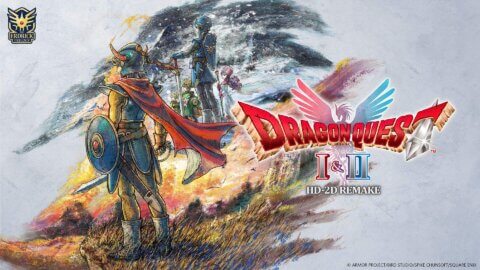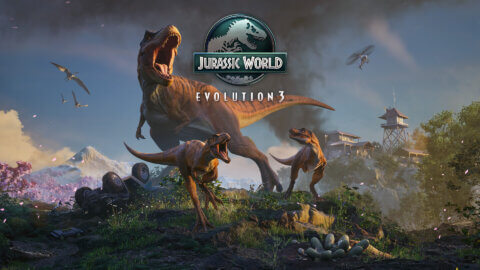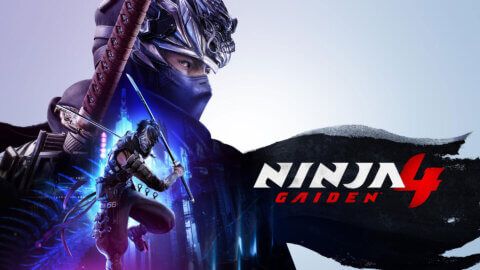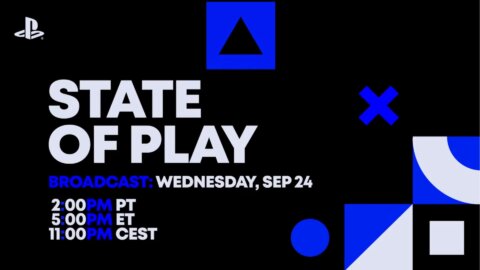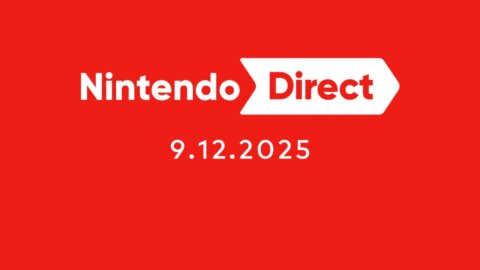Growing up, I spent countless hours with Final Fantasy Tactics and Tactics Ogre, falling in love with the mix of layered strategy, memorable characters, and political drama. Those games had a way of making every battle feel important, every choice meaningful. But somewhere along the line, these kinds of games became rarer, overshadowed by other genres. When Triangle Strategy first launched on Switch back in 2022, I had every intention of playing it, but life got in the way. By the time I had the capacity for it, other releases had stolen my attention. So when I saw it was making the jump to PS5 and Xbox, I knew this was my second chance and I wasn’t going to miss it again.
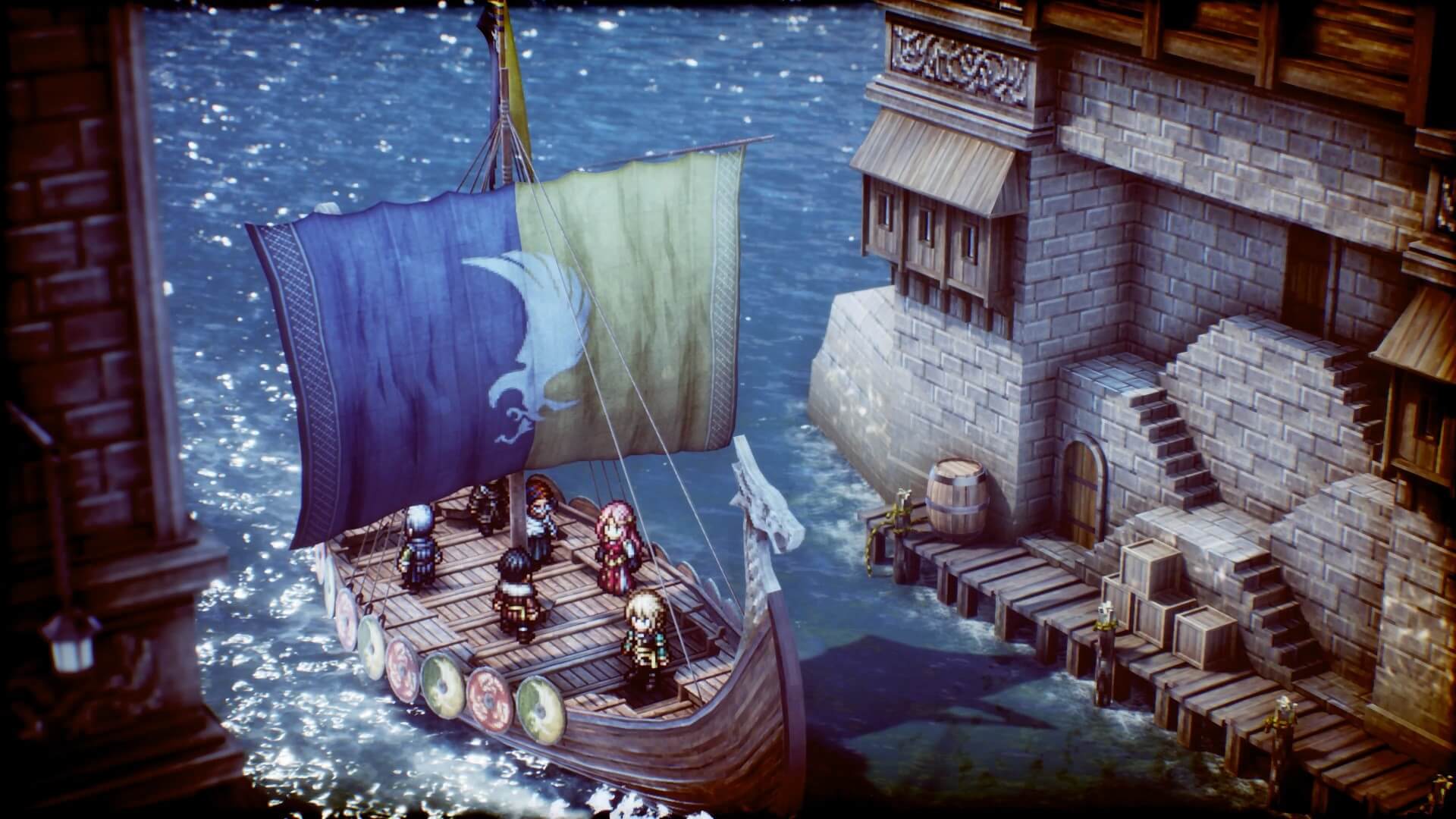
From the very first battle, Triangle Strategy felt like coming home. This game was made for people like me who grew up on FF Tactics and Fire Emblem. It captures that exact blend of grid-based tactical combat and sweeping political intrigue that defined the golden age of the genre. At the same time, it doesn’t just coast on nostalgia, it modernizes the formula with smart systems and presentation choices that make it feel both timeless and fresh.
Even though I had never touched the Switch version, playing Triangle Strategy felt nostalgic. That’s because experiences like this are so rare these days. Too often, strategy RPGs are watered down for broader appeal. Here, Square Enix leaned into complexity and nuance, trusting players to handle tough battles and even tougher decisions.
The story is set in the land of Norzelia, where three nations are locked in a fragile peace after years of conflict over scarce resources, primarily salt and iron. That uneasy balance doesn’t last long. You play as Serenoa Wolffort, heir to a noble house, who quickly finds himself entangled in the escalating struggle. What starts as a seemingly straightforward alliance marriage soon spirals into a full-blown political conflict where betrayal, shifting allegiances, and personal conviction all come into play.
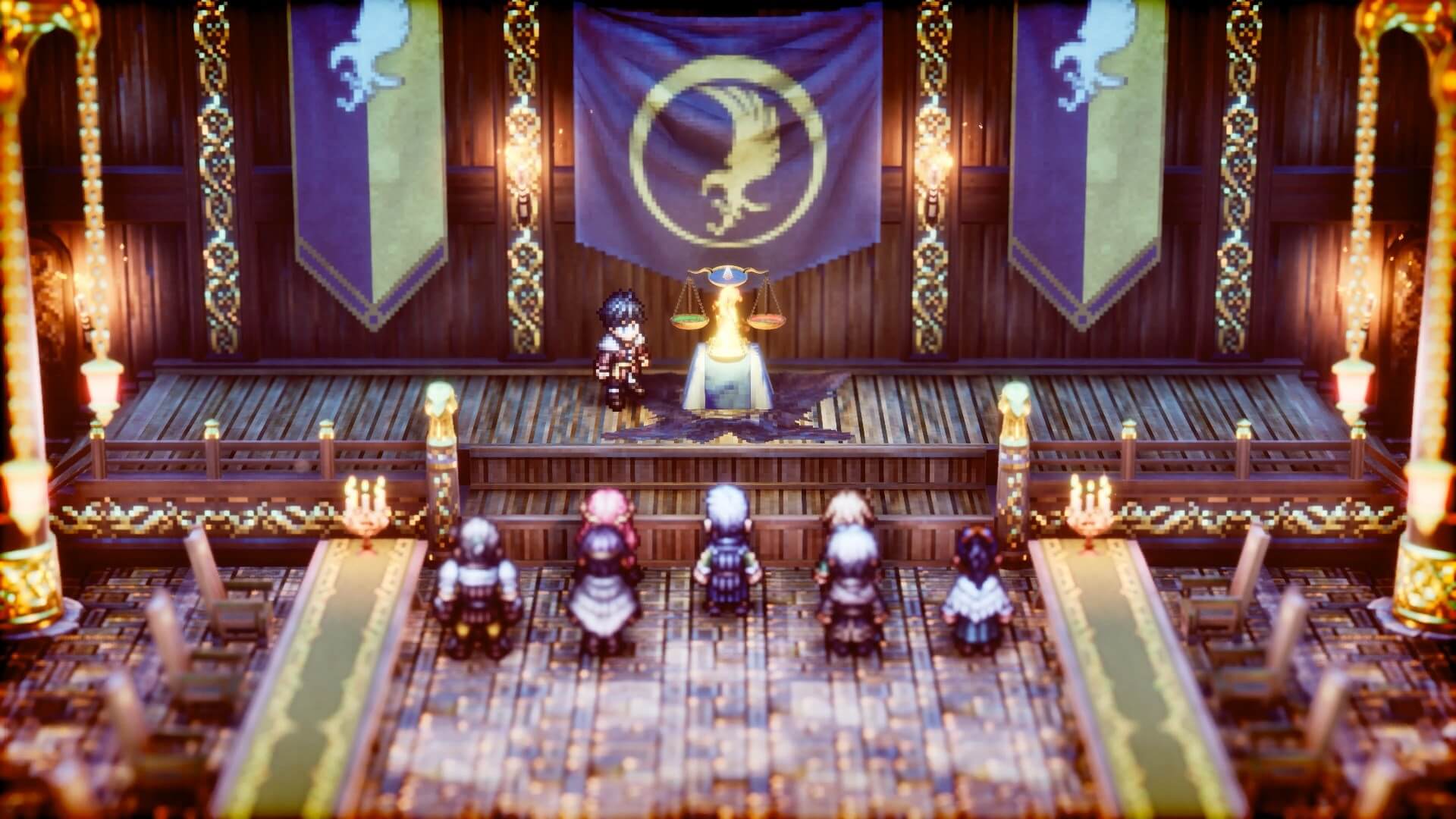
What makes the narrative work is its depth. This isn’t just a war story, it’s a political drama. It’s filled with intrigue, betrayals, moral gray areas, and those moments where there is no “right” choice, only the choice you can live with at the time. The cast is large and covers just about every archetype you can think of, the loyal knight, the cunning schemer, the idealist mage, the opportunistic mercenary. Normally, tropes like these risk feeling shallow or cartoony, but here the main characters are fleshed out enough that they feel believable rather than caricatured.
One of the most fascinating systems in Triangle Strategy is how your choices shape the story. Dialogue decisions, political stances, and battlefield decisions all influence the path you take. Sometimes these choices lead to different areas, different allies, or even entirely new recruitable characters. It’s a system that does more than just provide alternate endings, it makes the journey itself feel personal.
At the center of this is the Scales of Conviction system. Whenever a big decision needs to be made, Serenoa gathers his closest allies, and they literally vote on the path forward. Here’s where it gets interesting. You can try to sway them. Through dialogue and by learning information around town, you can strengthen your arguments and convince party members to support your position. Sometimes you succeed, sometimes you don’t, and the tension of not knowing where your allies will stand adds real weight to these moments. It’s one of the most creative ways I’ve seen choice and agency implemented in an RPG, and it ties perfectly into the game’s themes of leadership and responsibility.
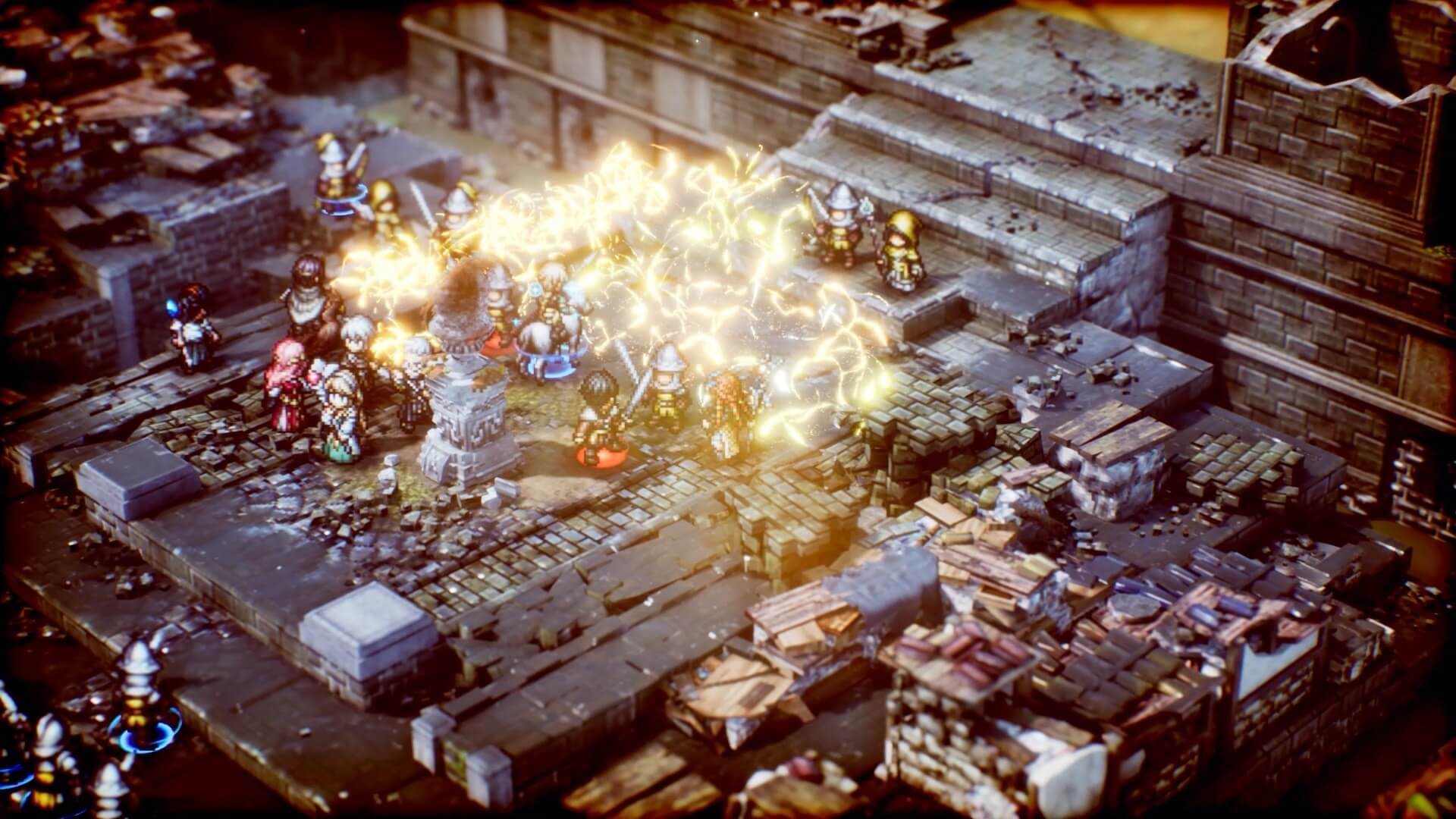
Of course, all the political intrigue in the world wouldn’t matter if the battles didn’t deliver, and they absolutely do. The combat is grid-based, turn-based strategy at its finest. Each character brings a unique role to the battlefield, often representing familiar RPG archetypes. The back-stabbing rogue, the powerful but fragile mage, the stalwart tank, the supporting healer. But where the game shines is in how those roles interact with positioning and terrain.
Flanking an enemy for a back attack guarantees a critical hit. Elevation provides extra range for archers and spellcasters. Weather and terrain hazards, like fire spreading across oil, or lightning electrifying puddles can completely change the course of a fight if you’re clever. Every battle felt like a puzzle, where success wasn’t just about raw strength but about reading the battlefield and finding synergies between your units.
It’s satisfying in that same way FF Tactics was, where pulling off the perfect strategy feels like you just solved a complex chess problem. And if you find it too punishing or too easy, the game offers multiple difficulty settings so you can tailor the experience.
I can’t talk about Triangle Strategy without gushing about the presentation. The 2D-HD art style is stunning, it remains one of the best things in modern gaming and I love it every time I see it being used. Characters and battle maps have this pixelated retro charm, but they’re layered with modern lighting and effects that make them pop. Towns look warm and lived-in, snowy battlefields feel harsh and unforgiving, and the painterly character portraits during dialogue give every scene extra weight.
The voice acting deserves praise too. The performances bring a lot of personality to the cast and elevate the political debates, making them feel more like weighty council chambers than text boxes. Not every line lands perfectly, but the overall effort makes the story far more engaging than it would’ve been with just text.
There was only one real flaw I had with the game. With such a large cast, I sometimes wished the side characters got more development. The game focuses most of its narrative energy on a core group, and while that keeps the story focused, it means some fascinating characters are left on the sidelines. There were moments where the pacing dragged a bit too, especially during long stretches of dialogue sequences. A few more side stories or character-driven scenes could have helped smooth that out.
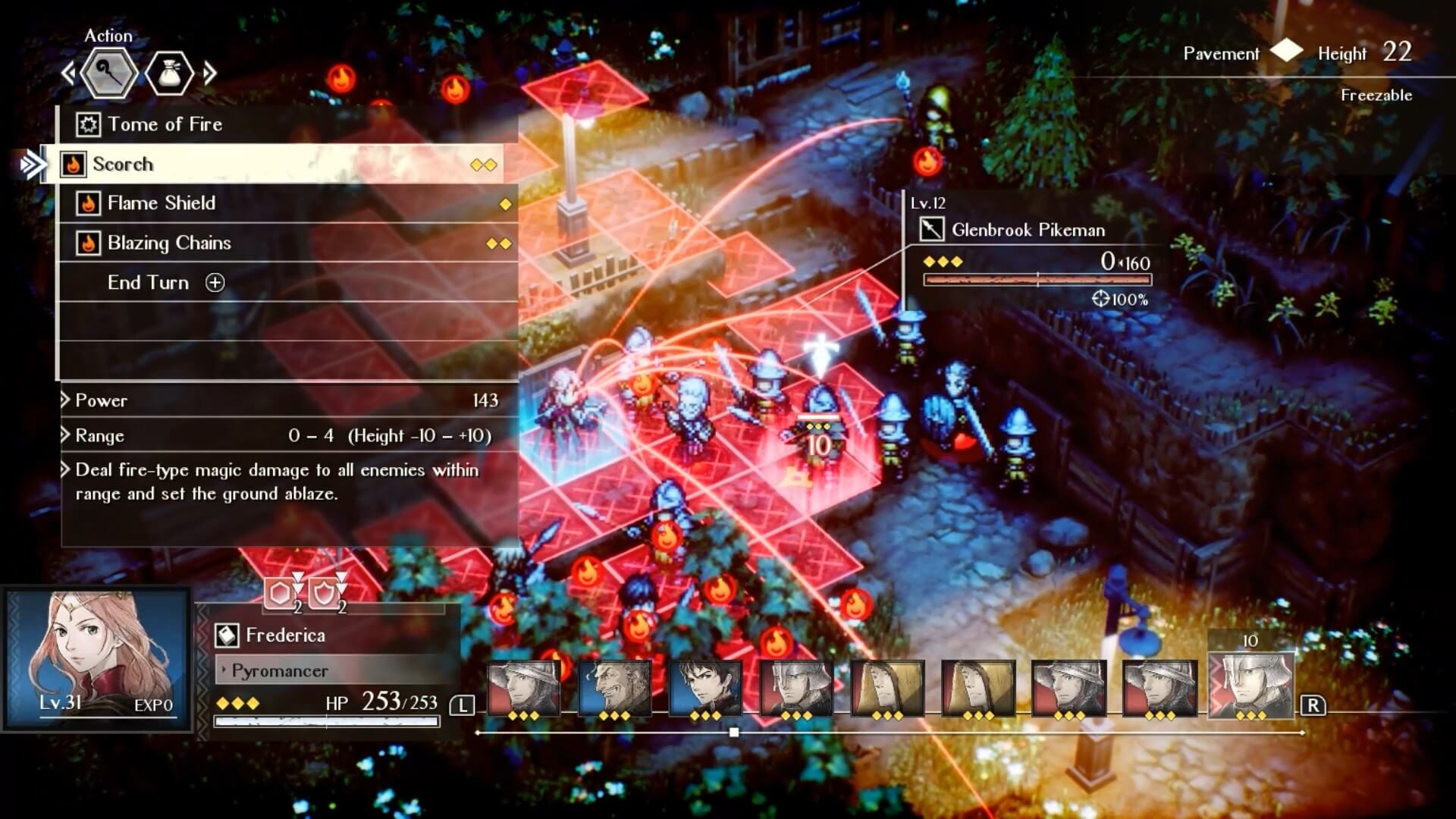
Final Thoughts
Playing Triangle Strategy on PS5 was like going back in time and rediscovering why I fell in love with this genre in the first place. It nails the essentials, deeply strategic combat, a story full of political intrigue, and a cast of characters worth caring about. But it also innovates, with the Scales of Conviction system and branching choices that make your journey feel like yours alone.
For newcomers, it’s an excellent entry point into a genre that rewards patience, planning, and tough choices.
I missed Triangle Strategy the first time around, but I’m glad I didn’t miss it again. If you’ve been craving a game that respects your intelligence, challenges your tactics, and tells a story that doesn’t shy away from complexity, then it’s absolutely worth your time.
A PS5 review code was provided by Square Enix for the purpose of this review.
If you want to see more content like this and never miss one of our frequent gaming and anime giveaways come and Follow Ani-Game on Twitter.
9
- + Tough and rewarding strategic combat
- + Great mix of character types
- + The 2D-HD visuals really shine
- + Choices that shape and divert the story
- - Missed opportunity not fleshing out some of the side characters to fix the pacing.
